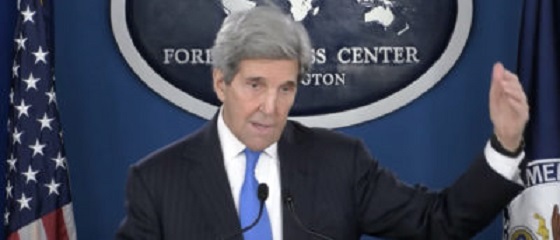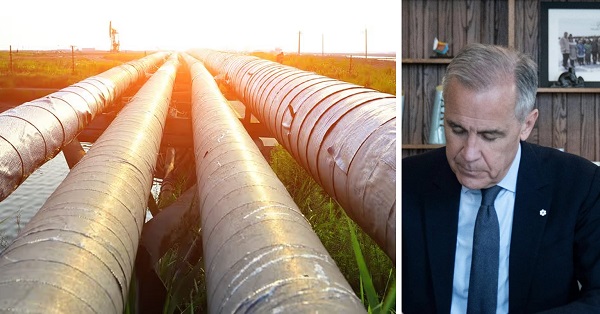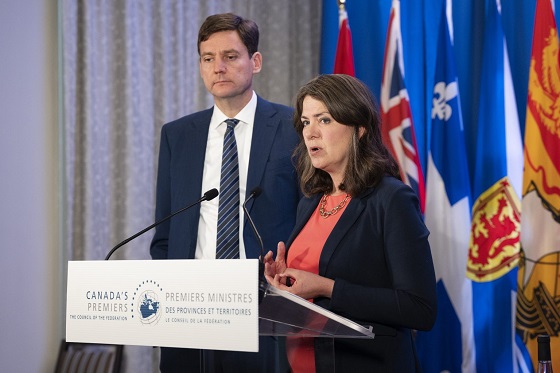Frontier Centre for Public Policy
UBCIC Chiefs Commit A Grave Error In Labelling Authors As Racist Deniers

From the Frontier Centre for Public Policy
By Rodney A. Clifton
UBCIC Chiefs attempt to suppress open debate on residential schools.
Is anyone surprised that the Union of BC Indian Chiefs on Aug. 12 wrote to many provincial municipalities (Powell River, Kamloops, and Quesnel, for example) demanding they reject “Residential School Denialism”?
Their demand is in response to a book edited by C.P. Champion and Tom Flanagan, Grave Error: How the Media Misled Us (and the Truth about Residential Schools). The authors of the 18 chapters include several well-known Canadian anthropologists, historians, political scientists, sociologists, and lawyers, many of whom have published extensively on Indigenous/non-Indigenous issues.
Even so, the organization of Chiefs call this book an “ardent dissemination of racist misinformation.”
Their letter to municipal leaders concludes with the following:
“The UBIC Chiefs Council stand with survivors and intergenerational survivors of Residential Schools and their families, as well as the children who never made it home and those who are harmed by the actions of those involved with the production and distribution of the book … and the deeply troubling trend of Residential School racist denialism and any unwillingness to accept facts and the work of experts.”
“We look forward to your response.”
As an author of a chapter in Grave Error, as co-author of two other chapters, and as a co-editor with Mark DeWolf of From Truth Comes Reconciliation: An Assessment of the Truth and Reconciliation Commission Report, I am pleased to respond to the Chiefs.
My recommendation to municipal leaders, and other concerned Canadians, is that before you respond to the Chiefs, you should read Grave Error and make up your up your own minds.
On Amazon, Grave Error has over 800 reviews, with an average rating of 4.6 out of 5. In fact, this book is ranked first on three Amazon lists, and it has been a best seller for many months.
One of the top Amazon reviews begins, “A well-researched, non-partisan and balanced approach to the hysterical outpourings of recent years.” Another review says, “There is not one whiff of racism or hatred in this book.”
As a contributing author to Grave Error, I will add a little of my history.
I lived for four months during the Summer of 1966 in the teachers’ wing of Old Sun, the Anglican Residential School on the Siksika (Blackfoot) First Nation in Southern Alberta. At the time, students were still in residence, and I was a 21-year-old university student intern working at the Band Office, where about half the employees were Siksika members. Also, most of the employed in Old Sun, where I lived, were Siksika.
In the fall of 1966, I became the Senior Boys’ Supervisor in Stringer Hall, the Anglican residence in Inuvik, NWT, where I looked after 85 mostly Indigenous boys in three dorms. About half of the employees in this residence were Indigenous.
I returned to the University of Alberta for the 1967-68 academic year, and in the summer of 1968, I was employed as the Beach Supervisor and Swimming Instructor in Uranium City, Northern Saskatchewan, where I taught swimming to many Indigenous children in a local lake.
Finally, in September 1968, Elaine Ayoungman, a young Siksika woman I met in 1966, and I were married in the Anglican Church in Strathmore, Alberta. Elaine had been a student in Old Sun for 10 years, and this September, we will celebrate our 56th wedding anniversary. We are still married, and, no doubt, surprisingly to the BC Chiefs, we are still in love.
By now, readers will realize that I strongly reject the UBCI Chiefs’ claim that I, or any of the other authors with chapters in Grave Error, are “racist deniers” of the reality of Indian Residential Schools.
In short, my message to the BC municipal leaders is to resist echoing the opinion of the UBCIC, me, or the opinions of over 80 percent of the reviews on Amazon who awarded the book a 4 or 5. My message is simple: Read Grave Error and make up your own mind. Likewise, my message to Canadians who want to know more about Indian Residential Schools is to listen to the survivors and Chiefs but also read the Truth and Reconciliation Report and then read both Grave Error and From Truth Comes Reconciliation.
Rodney A. Clifton is a Professor Emeritus at the University of Manitoba and a senior fellow at the Frontier Centre for Public Policy. His most recent book, with Mark DeWolf, is From Truth Comes Reconciliation: An Assessment of the Truth and Reconciliation Commission Report (Sutherland House Press, 2024). The book can be preordered from the publisher.
Food
Canada Still Serves Up Food Dyes The FDA Has Banned

From the Frontier Centre for Public Policy
By Lee Harding
Canada is falling behind on food safety by continuing to allow seven synthetic food dyes that the United States and several other jurisdictions are banning due to clear health risks.
The United States is banning nine synthetic food dyes linked to health risks, but Canada is keeping them on store shelves. That’s a mistake.
On April 22, 2025, the U.S. Department of Health and Human Services and the Food and Drug Administration (FDA) announced they would ban nine petroleum-based dyes, artificial colourings that give candies, soft drinks and snack foods their bright colours, from U.S. foods before 2028.
The agencies’ directors said the additives presented health risks and offered no nutritional value. In August, the FDA targeted Orange B and Citrus Red No. 2 for even quicker removal.
The good news for Canada is that Orange B was banned here long ago, in 1980, while Citrus Red No. 2 is barely used at all. It is allowed at two parts per million in orange skins. Also, Canada reduced the maximum permitted level for other synthetic dyes following a review in 2016.
The bad news for Canadians is that regulators will keep allowing seven dyes that the U.S. plans to ban, with one possible exception. Health Canada will review Erythrosine (called Red 3 in the U.S.) next year. The FDA banned the substance from cosmetics and drugs applied to the skin in 1990 but waited decades to do the same for food.
All nine dyes targeted by the FDA have shown evidence of tumours in animal studies, often at doses achievable through diet. Over 20 years of meta-analyses also show each dye increases the risk of attention deficit hyperactivity disorder in eight to 10 per cent of children, with a greater risk in mixtures.
At least seven dyes demonstrate broad-spectrum toxicity, especially affecting the liver and kidneys. Several have been found to show estrogenic endocrine effects, triggering female hormones and causing unwanted risks for both males and females. Six dyes have clinical proof of causing DNA damage, while five show microbiome disruption in the gut. One to two per cent of the population is allergic to them, some severely so.
The dyes also carry a risk of dose dependency, or addiction, especially when multiple dyes are combined, a common occurrence in processed foods.
U.S. research suggests the average child consumes 20 to 50 milligrams of synthetic dyes per day, translating to 7.3 to 18.25 kilograms (16.1 to 40.2 pounds) per year. It might be less for Canadian kids now, but eating even a “mere” 20 pounds of synthetic dyes per year doesn’t sound healthy.
It’s debatable how to properly regulate these dyes. Regulators don’t dispute that scientists have found tumours and other problems in rats given large amounts of the dyes. What’s less clear are the implications for humans with typical diets. With so much evidence piling up, some countries have already taken decisive action.
Allura Red (Red 40), slated for removal in the U.S., was previously banned in Denmark, Belgium, France, Switzerland, Sweden and Norway. However, these countries were forced to accept the dye in 2009 when the European Union harmonized its regulations across member countries.
Nevertheless, the E.U. has done what Canada has not and banned Citrus Red No. 2 and Fast Green FCF (Green 3), as have the U.K. and Australia. Unlike Canada, these countries have also restricted the use of Erythrosine (Red 3). And whereas product labels in the E.U. warn that the dyes risk triggering hyperactivity in children, Canadians receive no such warning.
Canadian regulators could defend the status quo, but there’s a strong case for emulating the E.U. in its labelling and bans. Health Canada should expand its review to include the dyes banned by the E.U. and those the U.S. is targeting. Alignment with peers would be good for health and trade, ensuring Canadian manufacturers don’t face export barriers or costly reformulations when selling abroad.
It’s true that natural alternatives present challenges. Dr. Sylvain Charlebois, a food policy expert and professor at Dalhousie University, wrote that while natural alternatives, such as curcumin, carotenes, paprika extract, anthocyanins and beet juice, can replace synthetic dyes, “they come with trade-offs: less vibrancy, greater sensitivity to heat and light, and higher costs.”
Regardless, that option may soon look better. The FDA is fast-tracking a review of calcium phosphate, galdieria blue extract, gardenia blue, butterfly pea flower extract and other natural alternatives to synthetic food dyes. Canada should consider doing the same, not only for safety reasons but to add value to its agri-food sector.
Ultimately, we don’t need colour additives in our food at all. They’re an unnecessary cosmetic that disguises what food really is.
Yes, it’s more fun to have a coloured candy or cupcake than not.What’s less fun is cancer, cognitive disorders, leaky gut and hormonal disruptions. Canada must choose.
Lee Harding is a research fellow for the Frontier Centre for Public Policy.
Addictions
Manitoba Is Doubling Down On A Failed Drug Policy

From the Frontier Centre for Public Policy
Manitoba is choosing to expand the same drug policy model that other provinces are abandoning, policies that normalize addiction while sidelining treatment, recovery, and public safety.
The New Democrat premier of British Columbia, David Eby, stood before reporters last spring and called his government’s decision to permit public drug use in certain spaces a failure.
The policy was part of the broader “harm reduction” strategy meant to address overdose deaths. Instead, it had stirred public anger, increased street disorder and had helped neither users nor the communities that host them. “We do not accept street disorder that makes communities feel unsafe,” Eby said. The province scrapped the plan.
In Alberta, the Conservative government began shutting down safer-supply prescribing due to concerns about drug diversion and misuse. The belief that more opioids can resolve the opioid crisis is losing credibility.
Ontario Progressive Conservatives are moving away from harm reduction by shutting down supervised consumption sites near schools and limiting safer-supply prescribing. Federal funding for programs is decreasing, and the province is shifting its focus to treatment models, even though not all sites are yet closed.
Yet amid these non-partisan reversals, Manitoba’s government has announced its intention to open a supervised drug-use site in Winnipeg. Premier Wab Kinew said, “We have too many Manitobans dying from overdose.” True. But it does not follow that repeating failed approaches will yield different results.
Reversing these failed policies is not a rejection of compassion. It is a recognition that good intentions do not produce good outcomes. Vancouver and Toronto have hosted supervised drug-use sites for years. The death toll keeps rising. Drug deaths in British Columbia topped 2,500 in 2023, even with the most expansive harm reduction infrastructure in the country. A peer-reviewed study published this year found that hospitalizations from opioid poisoning rose after B.C.’s safer-supply policy was implemented. Emergency department visits increased by more than three cases per 100,000 population, with no corresponding drop in fatal overdoses.
And the problem persists day to day. Paramedics in B.C. responded to nearly 4,000 overdose calls in July 2024 alone. The monthly call volume has exceeded 3,000 almost every month this year. These are signs of crisis management without a path to recovery.
There are consequences beyond public health. These policies change the character of neighbourhoods. Businesses suffer. Residents feel unsafe. And most tragically, the person using drugs is offered little more than a cot, a nurse and a quiet signal to continue. Real help, like treatment, housing and purpose, remains out of reach.
Somewhere along the way, bureaucracies stopped asking what recovery looks like. They have settled for managing human decline. They call it compassion. But it is really surrender, wrapped in medical language.
Harm reduction had its time. It made sense when it first emerged, during the AIDS crisis, when dirty needles spread HIV. Back then, the goal was to stop a deadly virus. Today, that purpose has been lost.
When policy drifts into ideology, reality becomes an afterthought. Underneath today’s approach is the belief that drug use is inevitable, that people cannot change, that liberty means letting others fade away quietly. These ideas do not reflect science. They do not reflect hope. They reflect despair. They reflect a politics that prioritizes the appearance of compassion over effectiveness.
What Manitoba needs is treatment access that meets the scale of the problem. That means detox beds, recovery homes and long-term care focused on restoring lives. These may not generate the desired headlines, but they work. They are demanding. They are slow. And they offer respect to the person behind the addiction.
There are no shortcuts. No policy will undo decades of pain overnight. But a policy that keeps people stuck using is not mercy. It is maintenance with no way out.
A government that believes in its people should not copy failure.
Marco Navarro-Genie is vice-president of research at the Frontier Centre for Public Policy and co-author, with Barry Cooper, of Canada’s COVID: The Story of a Pandemic Moral Panic (2023).
-

 Food22 hours ago
Food22 hours agoCanada Still Serves Up Food Dyes The FDA Has Banned
-

 Daily Caller2 days ago
Daily Caller2 days agoJohn Kerry Lurches Back Onto Global Stage For One Final Gasp
-

 Addictions22 hours ago
Addictions22 hours agoManitoba Is Doubling Down On A Failed Drug Policy
-

 National1 day ago
National1 day agoEco-radical Canadian Cabinet minister resigns after oil deal approved
-

 Alberta22 hours ago
Alberta22 hours agoNet Zero goal is a fundamental flaw in the Ottawa-Alberta MOU
-

 Alberta17 hours ago
Alberta17 hours agoKeynote address of Premier Danielle Smith at 2025 UCP AGM
-

 COVID-1922 hours ago
COVID-1922 hours agoFDA says COVID shots ‘killed’ at least 10 children, promises new vaccine safeguards
-

 Energy8 hours ago
Energy8 hours agoCanadians will soon be versed in massive West Coast LPG mega-project




